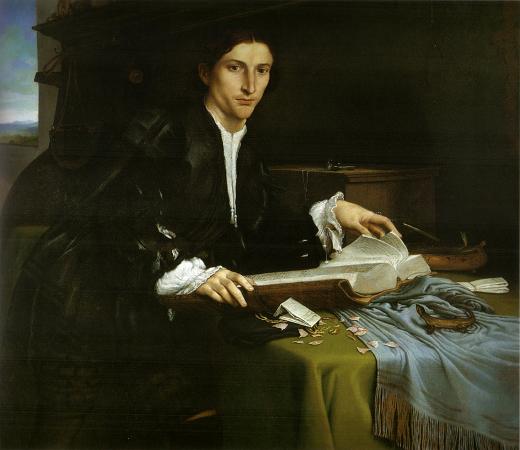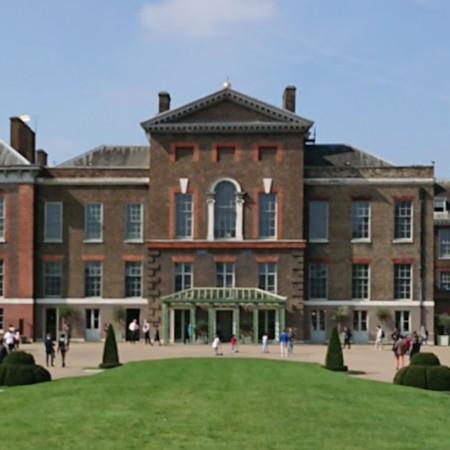Andrea Odoni (1527). Oil on canvas. 105 x 117. The Portrait of Andrea Odoni is a painting by the Italian High Renaissance painter Lorenzo Lotto dated 1527, now in the Royal Collection of the United Kingdom. In early 2019 it was on loan to the National Gallery for an exhibition of Lotto's portraits. The style is typical of Lotto's Venetian period, with denser tones, a softer chromatic range and atmospheric effects at the boundaries. The painting is signed and dated by Lotto. Andrea Odoni was a successful merchant in Venice, the son of an immigrant to the city from Milan. He was therefore a member, though much wealthier than most, of the ordinary cittadini rather than the patrician class who are the subject of most Venetian portraits. He inherited a collection of art and antiquities from his uncle, and considerably expanded it. His house, which Pietro Aretino implied was somewhat ostentatious, was described by Giorgio Vasari as a friendly haven for men of talent. There has been considerable debate about the meaning Lotto, presumably together with his sitter, intended to convey with the choice of objects. The portrait hung in Odoni's bedroom, alongside paintings by Titian and Palma Vecchio, and a reclining nude by Girolamo Savoldo. The horizontal format, with which Lotto had already experimented for portraits of couples, was adopted here for a single subject, a merchant Renaissance humanist portrayed as though among his collection of marbles from Classical antiquity. Most of the pieces are identifiable and well-known, and are shown here either as other versions or as plaster casts. The head of the Emperor Hadrian in the right-hand foreground probably does represent a piece Odoni owned, a cast of piece now in Naples. Others may have belonged to Lotto's studio rather than Odoni. The man wears a rich, dark, fur-lined jacket. He sits next to a table, on which there lies a book and some ancient coins. In his hand he holds a small statue of Diana of Ephesus. The other hand touching the heart is a gesture characteristic of Lotto's work. The painting and is mentioned in 1532 by Marcantonio Michiel, when owned by the sitter, Andrea Odoni. It was also seen by Giorgio Vasari presumably on his visit to Venice in 1545, and after Andrea's death was in an inventory of the collection of his brother and heir, Alvise Odoni, in 1555. It later passed to Lucas van Uffelen, probably by 1623, then Gerrit Reynst, 1639, then the States of Holland and West Friesland for presentation to Charles II as part of the Dutch Gift of 1660. When the painting was in Amsterdam, in the Van Uffelen collection or in the Reynst Collection, it was engraved, in reverse like most engravings of that period, by Cornelis Visscher.
more...




